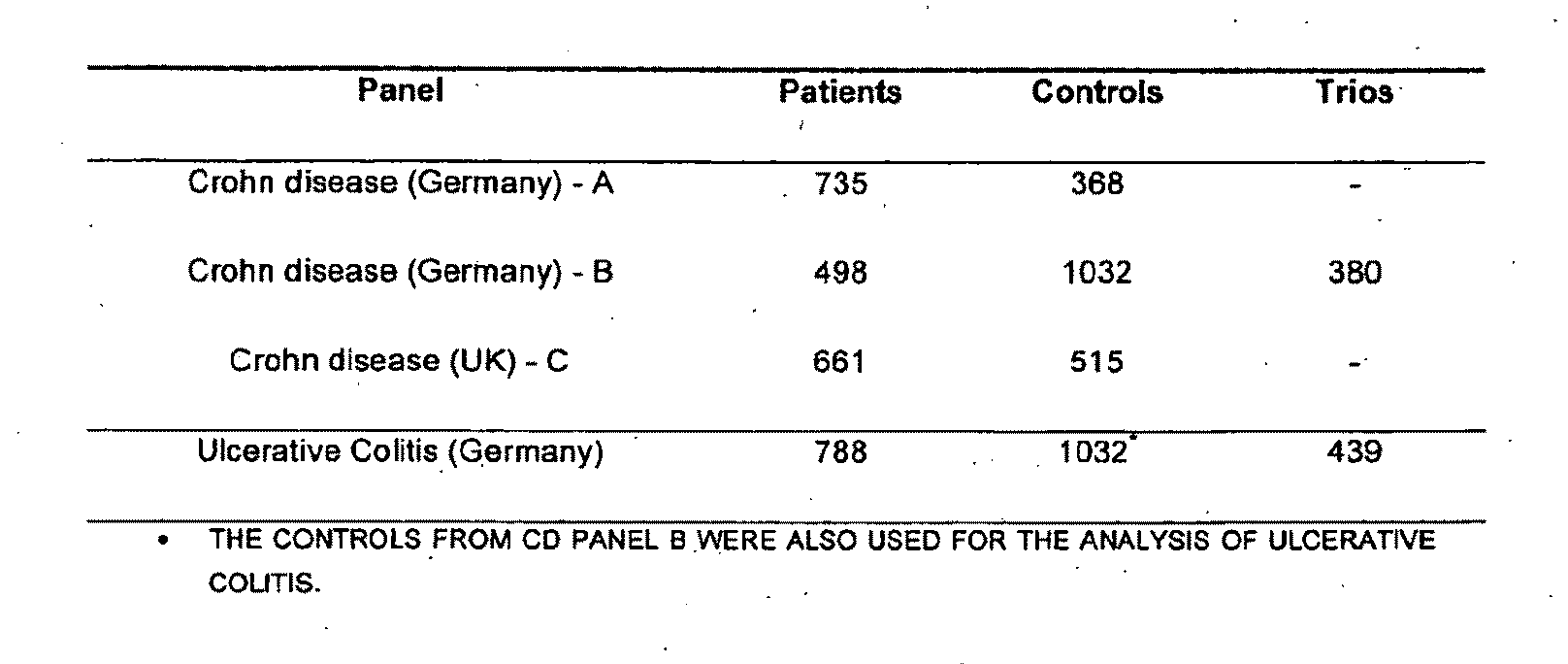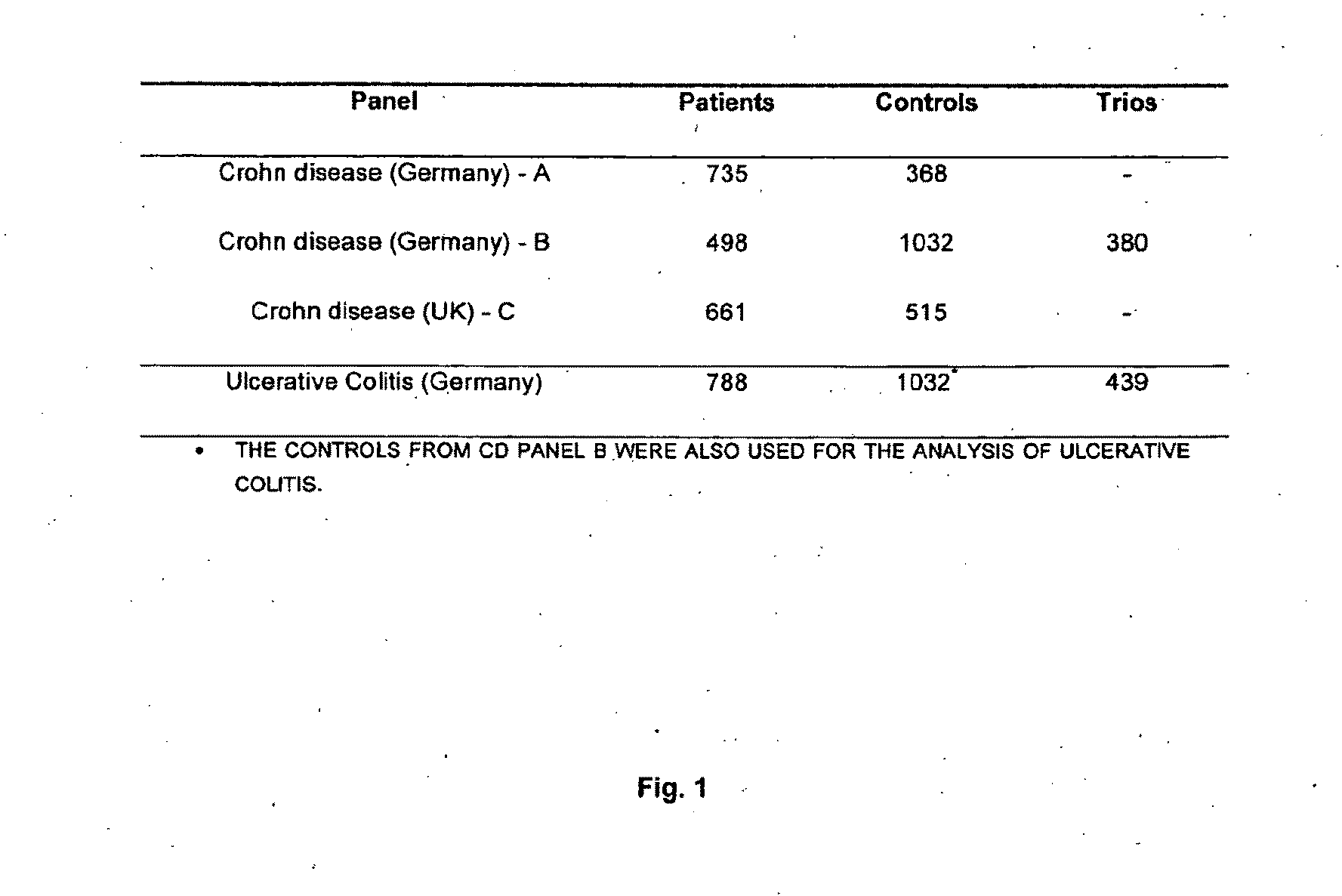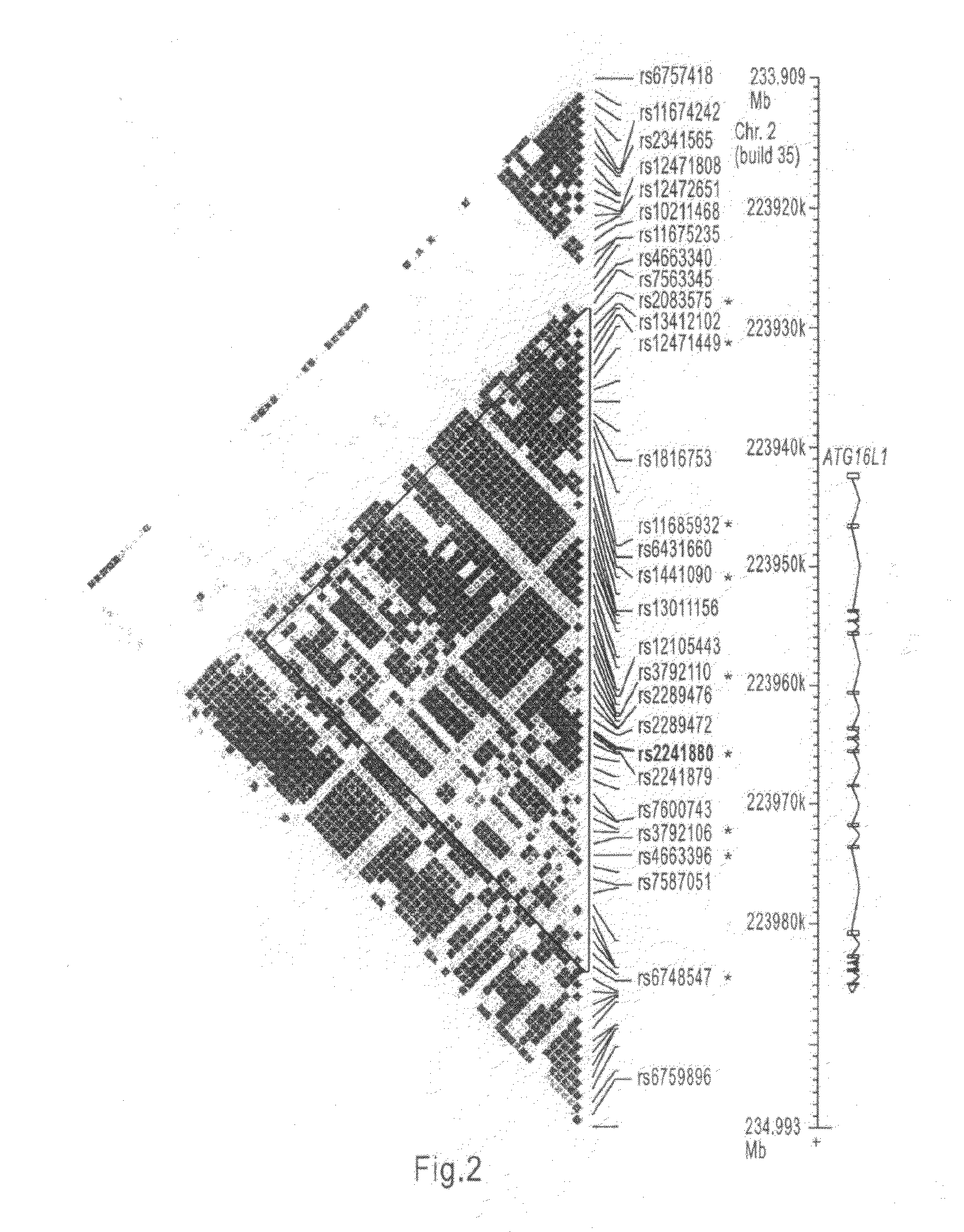Crohn disease susceptibility gene
a susceptibility gene and gene technology, applied in the field of genetics, can solve the problems of increased pain, and often life-altering symptoms, and achieve the effects of chronic state of improperly regulated immune system function, and reducing the risk of colon cancer
- Summary
- Abstract
- Description
- Claims
- Application Information
AI Technical Summary
Benefits of technology
Problems solved by technology
Method used
Image
Examples
example 1
GWS Using Samples from the QFP
[0158]Recruited Samples from the Quebec Founder Population
[0159]All individuals were sampled from the Quebec founder population (QFP). Membership in the founder population was defined as having four grandparents with French Canadian family names who were born in the Province of Quebec, Canada or in adjacent areas of the Provinces of New Brunswick and Ontario or in New England or New York State. The Quebec founder population has two distinct advantages over general populations for LD mapping. Because it is relatively young (about 12 to 15 generations from the mid 17th century to the present) and because it has a limited but sufficient number of founders (approximately 2600 effective founders, Charbonneau et al., 1987), the Quebec population is characterized both by extended LD and by decreased genetic heterogeneity. The increased extent of LD allows the detection of disease associated genes using a reasonable marker density, while still allowing the incr...
example 2
The Replication and Functional Characterization of ATG16L1 Gene in European Samples
PUM
| Property | Measurement | Unit |
|---|---|---|
| degrees of freedom | aaaaa | aaaaa |
| weight loss | aaaaa | aaaaa |
| electrophoretic analysis | aaaaa | aaaaa |
Abstract
Description
Claims
Application Information
 Login to View More
Login to View More - R&D
- Intellectual Property
- Life Sciences
- Materials
- Tech Scout
- Unparalleled Data Quality
- Higher Quality Content
- 60% Fewer Hallucinations
Browse by: Latest US Patents, China's latest patents, Technical Efficacy Thesaurus, Application Domain, Technology Topic, Popular Technical Reports.
© 2025 PatSnap. All rights reserved.Legal|Privacy policy|Modern Slavery Act Transparency Statement|Sitemap|About US| Contact US: help@patsnap.com



